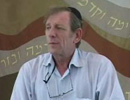- Torah Portion and Tanach
- Terumah
3169
They shall make for Me a Sanctuary, that I may dwell among them (25:8). Sefer HaChinuch writes that this is the source for the positive commandment "to build a house for the sake of HaShem... where we can offer our sacrifices to Him..." After a lengthy discussion, he concludes, "This mitzvah applies when the majority of Jews [dwell] in their Land, and it is one of those mitzvot that are not incumbent upon the individual, rather the community."
R. Yehoshua of Kutno (Yeshu’ot Malko) asks: It is well known that relatively few Jews returned to Zion at the end of the seventy-year Babylonian exile; most chose to remain in exile. How, then, did Ezra and Nechemyah build the Second Temple? According to Sefer HaChinuch, a majority of world Jewry must live in the Land in order to do so!
R. Yehoshua answers his question based on a Gemara in Chagigah (15a):
[God] created righteous and wicked people, and He created Gan Eden and Gehenom. Everyone has two portions: one in Gan Eden and one in Gehenom. If a righteous person merits it, he receives his and his friend’s portion in Gan Eden. If a wicked person so deserves, he receives his and his friend’s portion in Gehenom.
The same applies here. At the time of Ezra, all Jews had the ability and opportunity to make aliyah. The majority, however, willingly chose not to, mainly because they became too complacent in exile. Therefore, the few Jews who withstood the temptations of the Diaspora and ascended to Eretz Yisrael received not only their own "portion" in the Holy Land, but also their friends’ portions. Although quantitatively only a minority of Jews lived in the Land, qualitatively it was as if the majority dwelt there. Thus, they were able to rebuild the Holy Temple.
There are many similarities between the return to Zion at the time of Ezra and today’s return to Zion. Both were initiated by the Gentiles (Cyrus and the Balfour Declaration); both were carried out - to a large extent - by irreligious Jews; and in both cases many religious Jews refused to take part. What we learn from Chazal and R. Yehoshua Kutner is that when God gives us the opportunity to return to our Homeland, we must seize it. For if we don’t, we run the risk of ruining the redemption for all of Klal Yisrael or forfeiting our personal share in God’s special Land.

The Holy Ark: Religious Symbol or National Symbol?
Rabbi Yossef Carmel | Adar 3 5783

The Mutual Love Between G-d and Israel
Rabbi Moshe Tzuriel | 30 Shvat 5785

Whatever Happened to the Mishkan?
Rabbi Stewart Weiss | Adar I 21 5782

Donations Rather Than Whips and Scorpions
Rabbi Yossef Carmel

Aaron, Moses, and the High Priesthood
Parashat Shmini
Rabbi Avraham Yitzchak HaLevi Kilav

The Bracha on Blossoming Trees
Rabbi Yirmiyohu Kaganoff | Adar II 27 5782

The Bracha on Blossoming Trees
Rabbi Yirmiyohu Kaganoff | Adar II 27 5782

Parsha Summary: Acharei Mot - Kedoshim
An Overview of the Torah Portion
Rabbi Stewart Weiss | 5775

Daf Yomi Shevuot Daf 7
R' Eli Stefansky | 10 Iyar 5785

Reassuring His Parents – #314 – part II
Date and Place: 23 Sivan 5670 (1910), Yafo
Beit Din Eretz Hemda - Gazit | Iyar 5785

Parashat Hashavua: Kedoshim Teh’yu, Goy Kadosh – Are They Related?
Rabbi Yossef Carmel | Iyar 5785





